10 Texas Wasps to Know and Appreciate!
Want to learn about common Texas wasps? You’ve come to the right place!
Start by downloading my free printable PDF of 10 Texas Bees & Wasps. You can keep this handy one-pager by your garden!
Wasps have a PR problem – right up there along with snakes. People are most likely to equate wasps with painful wasp stings, not all the important ecosystem functions that wasps perform.
Did you know that only about 10% of wasp species are social wasps, i.e., the kind prone to stinging to defend their nest? The remaining 90% are solitary wasp species that do not tend to sting!
Rather than grabbing for a can of Raid at the first sight of a wasp nest, I encourage to learn a little bit about these important insects that we share Texas with!
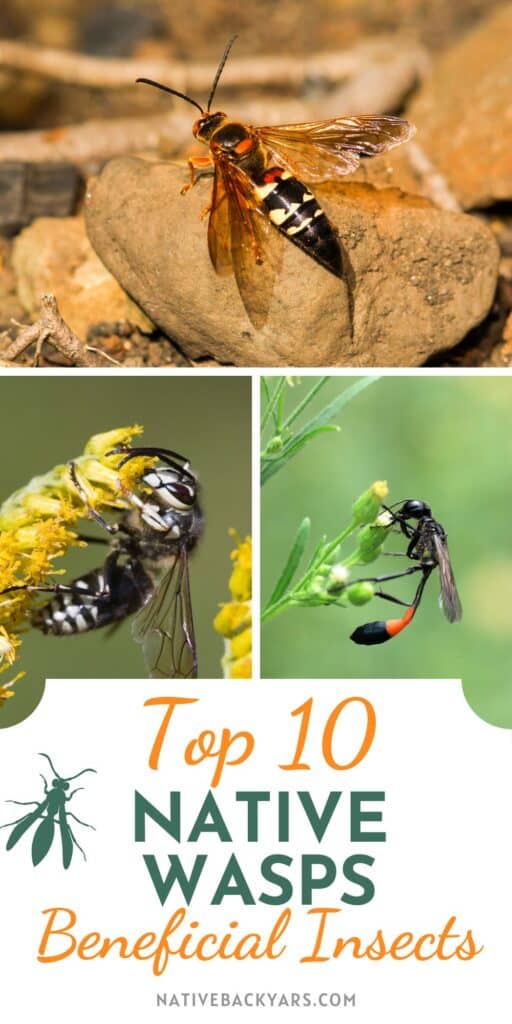
Benefits of Texas Wasps
Our native wasps perform many important ecological services here in Texas. Most importantly, they keep insect populations in a healthy balance by serving as predators and parasitoids. Adult wasps also serve as pollinators.
- Wasps are important predators in the food web. They pray on insects, caterpillars, and spiders (including garden pests) to feed their larvae.
- While not as efficient at pollinating as our native bees, many adults collect nectar and aid in plant pollination.
- There are over 100 species of plants in the world that rely solely on wasps to pollinate them. Fig trees are a great example. Without the wasps that pollinate them, there would be no more figs!
Types of Wasps in Texas
Not all wasps are the same! There are an astonishing 18,000 different species of wasps in North America. Today we’re going to focus on 10 wasp species you will commonly see in the Lone Star State. It is first important to know the difference between social wasps and solitary wasps:
Social Wasps in Texas
About 10% of wasp species globally are social insects. They live in colonies led by a single queen and hunt prey to feed their larvae. They are more aggressive than solitary wasps, and will sting if their nest is threatened.
Types of Social Wasps
- Yellow Jackets
- Paper Wasps
- Bald Faced Hornets
Solitary Wasps in Texas
Around 90% of wasp species globally are solitary species, meaning they don’t live in colonies. While some solitary wasps build nests, other solitary wasps are parasitoid wasps. Rather than building a nest, they lay their eggs directly in their prey so their larvae can feed on the host. To do so, they first inject prey with venom to paralyze it.
Types of Solitary Wasps:
- Parasitoid Wasps
- Mud Daubers
- Cicada Killers
- Sand Wasps
- Digger Wasps
- Potter Wasps
10 Common Texas Wasps to Know
1. Paper Wasps
Paper Wasps are a group of social wasps commonly found in Texas. They are most easily identified by their hexagon-patterned nests made from chewed wood pulp. This top insect predator hunts for caterpillars and other insects to feed its larvae.
How to Identify Paper Wasps:
- Medium wasps around 1 inch long.
- Narrow waists with different colors from black wasps to reddish brown, or with yellow stripes.
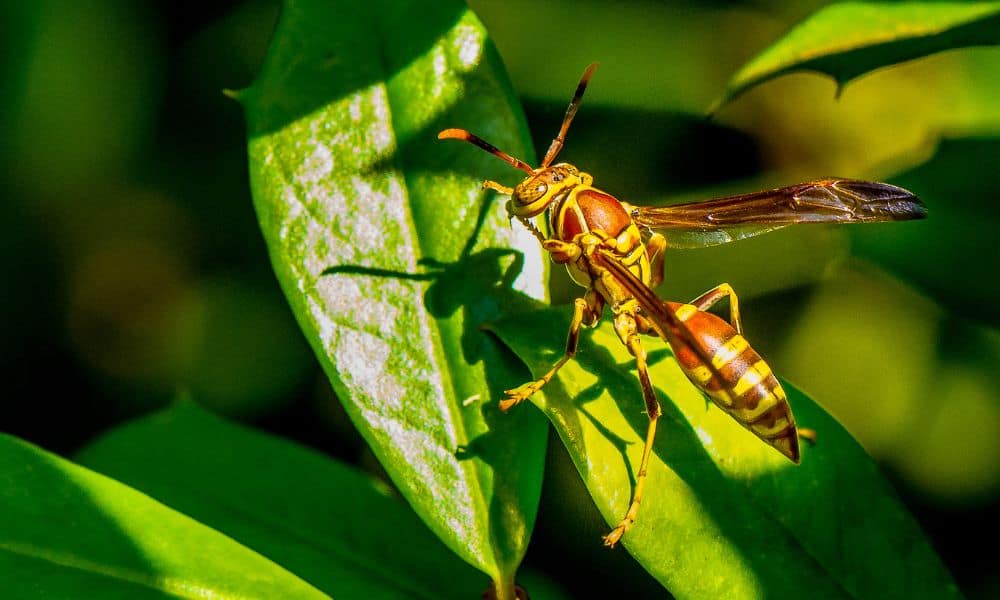
Paper Wasp Nest
Since different paper wasp species look different, the easiest way to identify them is by their nest:
- Paper wasps use wood fibers to create an umbrella-shaped nest in a honeycomb pattern.
- These nests hang from a single “stem” and can be found on porch ceilings, eaves, and under just about any horizontal surface!
- The queen places a single egg in each cell of the nest.
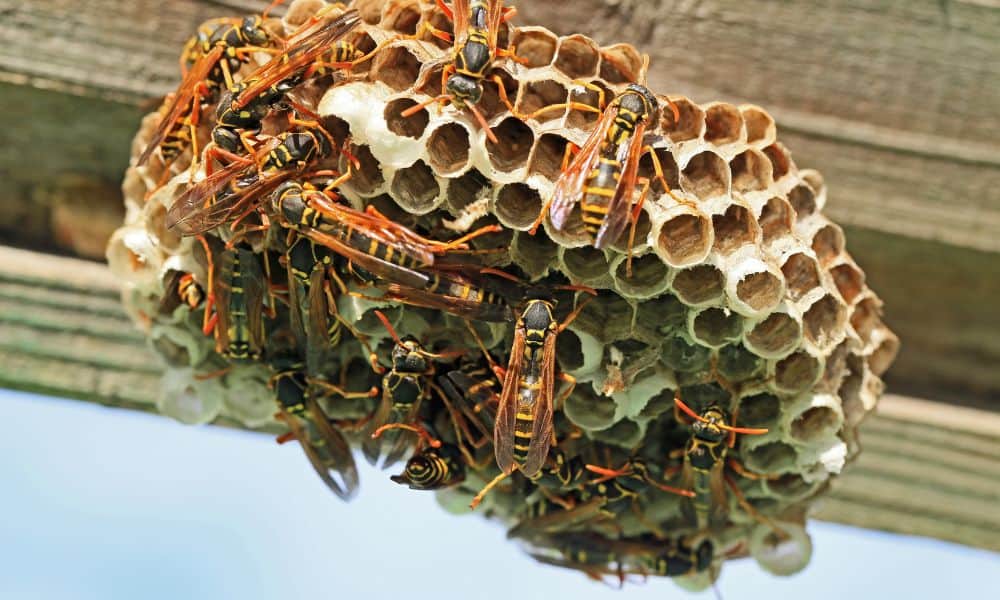
2. Red Paper Wasps
This species of paper wasp (Polistes carolina) is one I see frequently in my yard in San Antonio, Texas. The Red Paper Wasp is a social wasp like other species of paper wasps.
How to Identify Red Paper Wasps
- 3/4 to 1 inch long.
- Easy to identify red body with black wings.
- Their paper nests look similar to other paper wasp species.
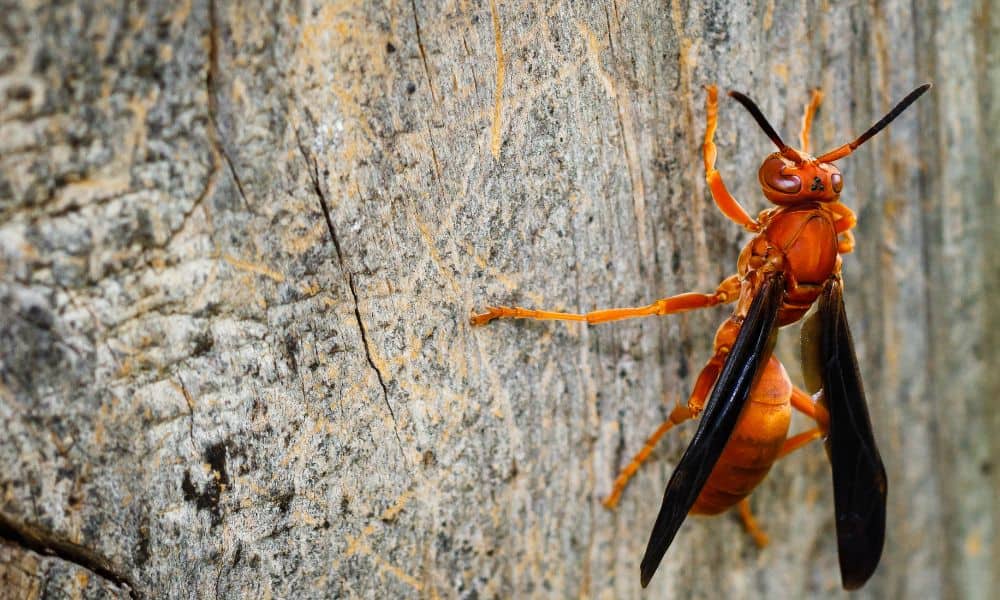
3. Yellow Jackets
This social wasp species (Vespula species) tend to be the most aggressive wasps. Yellow Jacket wasps in Texas are also called Southern Yellowjackets.
How to Identify Yellow Jacket Wasps
- Medium-sized wasps around 1/2 inch long.
- Black body with yellow stripes.
- Often confused with European honey bees because they are similar in size. However, its hairless abdomen helps differentiate it from a bee.
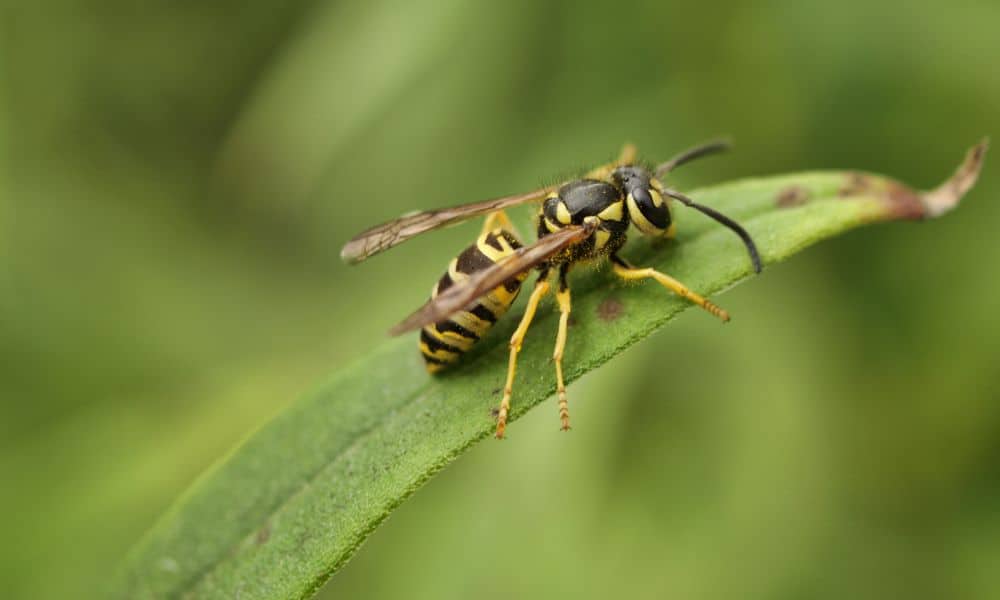
Yellow Jacket Nests
- Yellow Jacket nests are typically built underground, but can also be found above ground.
- They build a similar honeycomb-like nest from wood pulp as paper wasps.
- However, Yellow Jackets cover their nests with a smooth paper envelope.
- There is a single opening at the bottom of the nest.
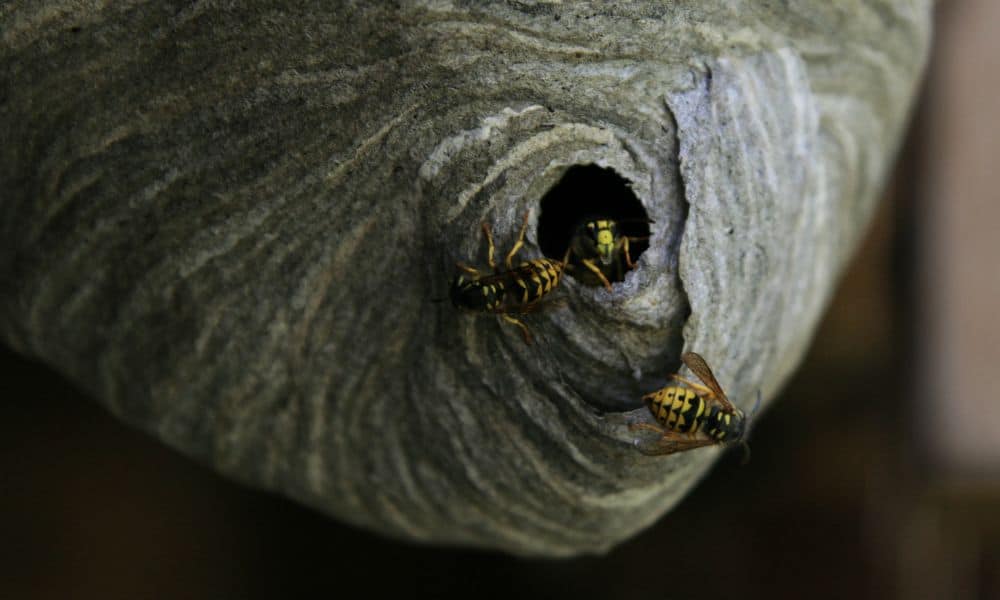
4. Bald-Faced Hornet
Bald-Faced Hornets are actually not true hornets, but are another type of Yellow Jacket wasp. Only one Bald-Faced Hornet species is found in Texas = Dolichovespula maculata.
These social wasps build large football-shaped nests and feed their larvae insects and nectar.
How to Identify Bald-Faced Hornets
- Adults are ~3/4 inch long.
- Black bodies with white markings on head and end of abdomen.
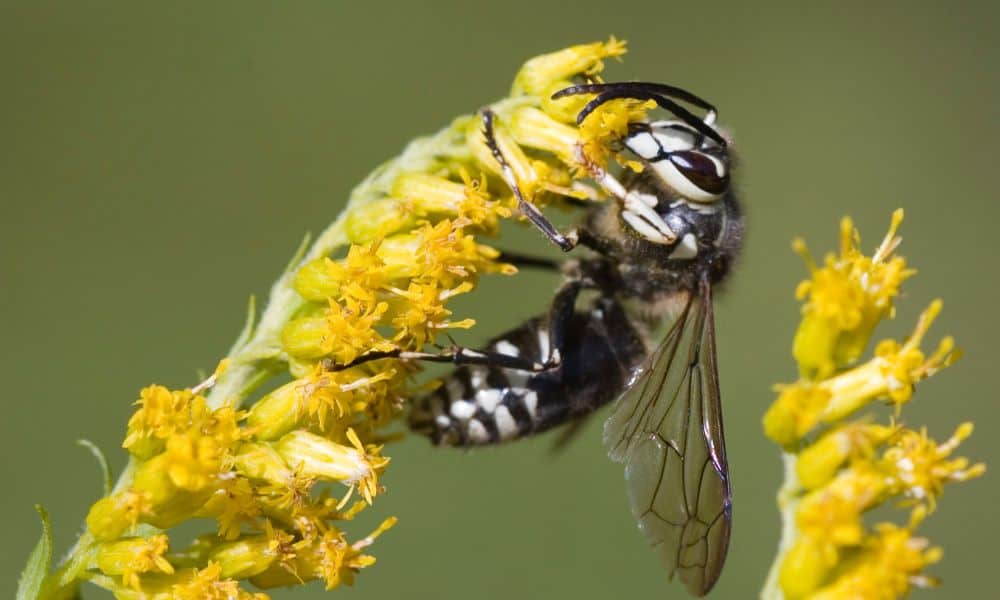
Bald-Faced Hornet Nests
- These wasps create a paper-enclosed nest above ground in trees or under building eaves.
- The nest can be as large as 2 feet long.
- There can be between 200-400 adults in a colony.
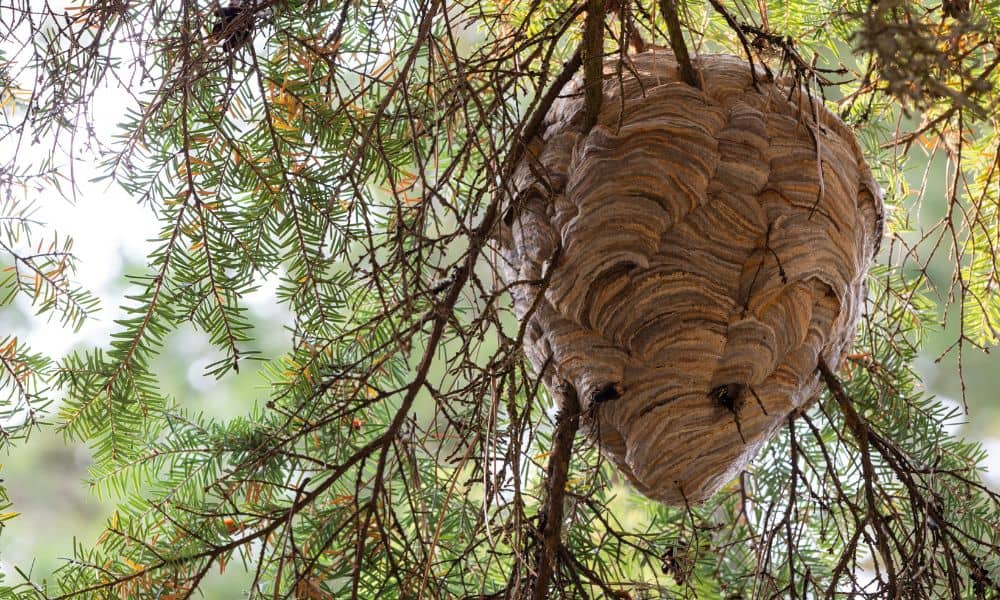
5. Cicada Killer Wasp
This solitary wasp may sound scary (and look scary too!), but the only thing that needs to be afraid of them are their prey – Cicadas. These wasps paralyze Cicadas and feed them to their larvae in underground burrows.
The largest species of wasp in Texas, Cicada Killers can be confused with the European Hornet or Asian Giant Hornet, two introduced species. FYI – the Asian Giant Hornet has not been spotted in Texas to date. If you think you see one, be sure to report it!
How to Identify Cicada Killer Wasps
- 1.5 inches long
- Look for three broken yellow bands on its abdomen. Giant Hornets have unbroken yellow bands.
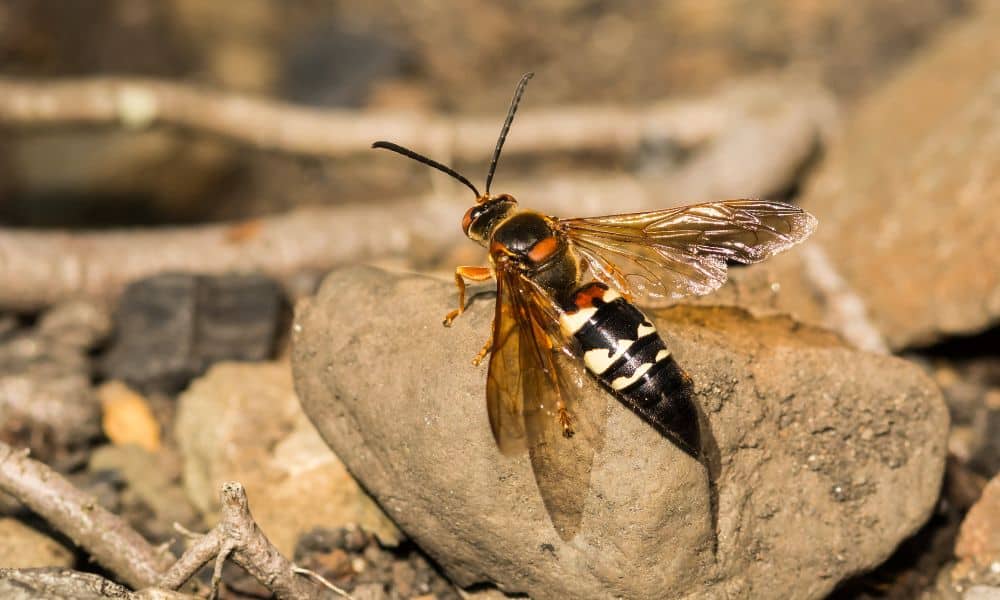
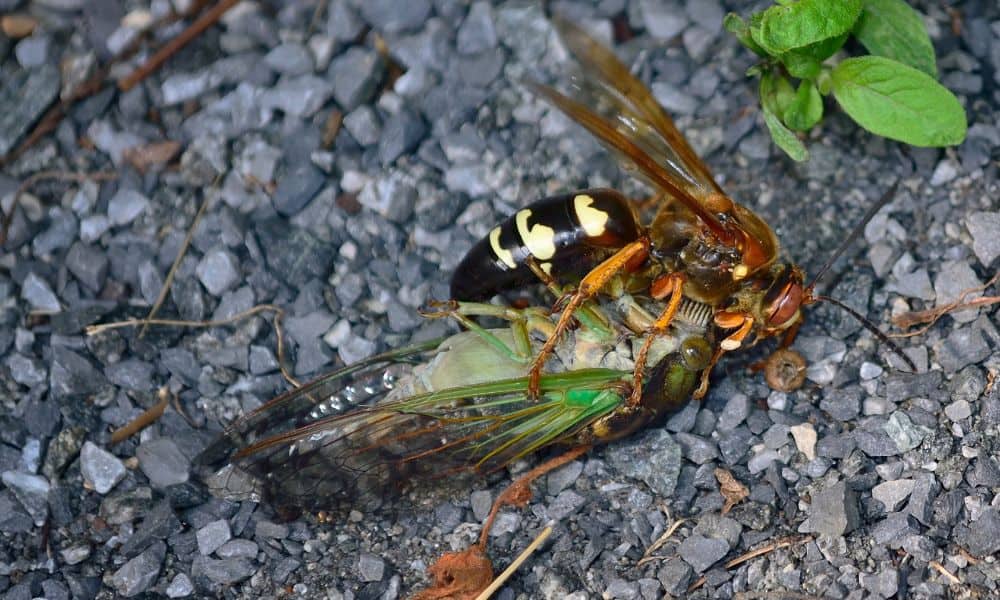
Cicada Killer Nests
- Cicada Killers create burrows underground with multiple branches and cells.
- A female Cicada Killer will paralyze a Cicada and drag it into the burrow to feed her larvae.
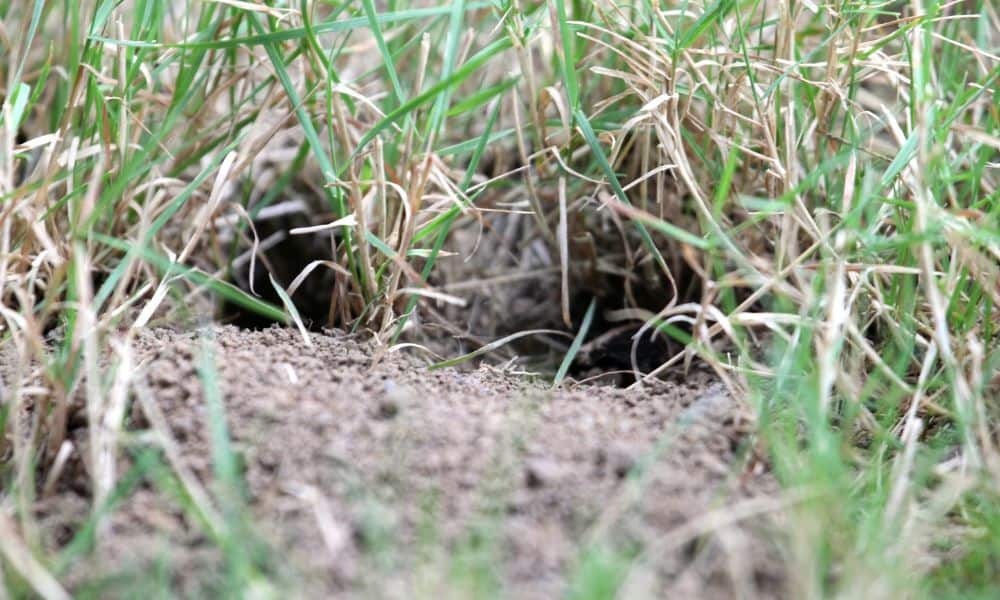
6. Mud Dauber Wasp
Ever spot a nest made of mud on the side of a building? That was created by a solitary Mud Dauber Wasp!
How to Identify Mud Dauber Wasps
- 3/4″ to 1″ long.
- Mud Dauber species come in different shades of black, and some with yellow stripes.
- The easiest way to differentiate them from other wasps is by their narrow waist.
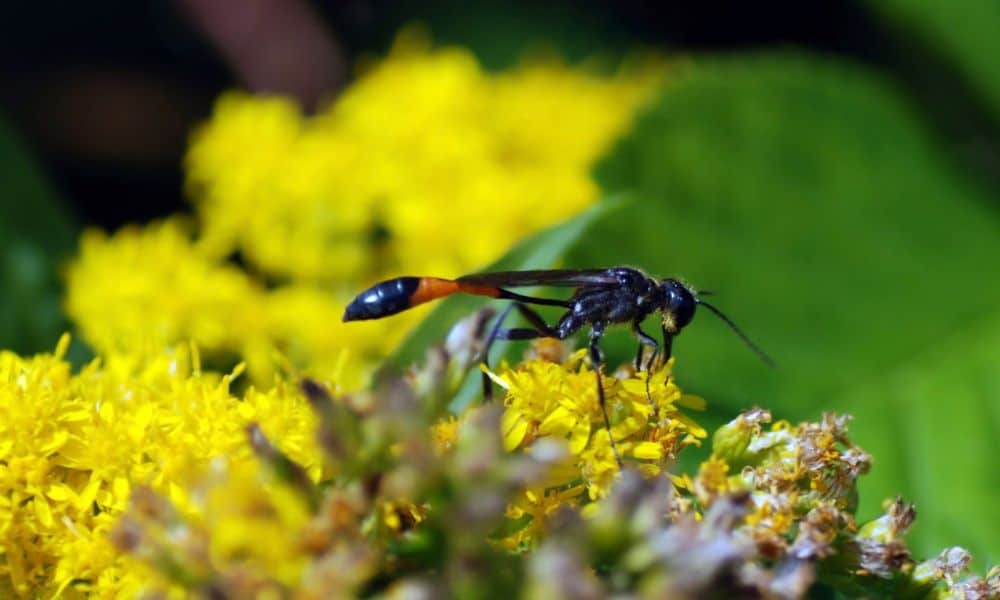
Mud Dauber Nests
- A female Mud Dauber wasp collects balls of mud to construct her nest.
- She will then hunt and paralyze spiders to fill her nest. When her eggs hatch, the larvae feed on the spiders.
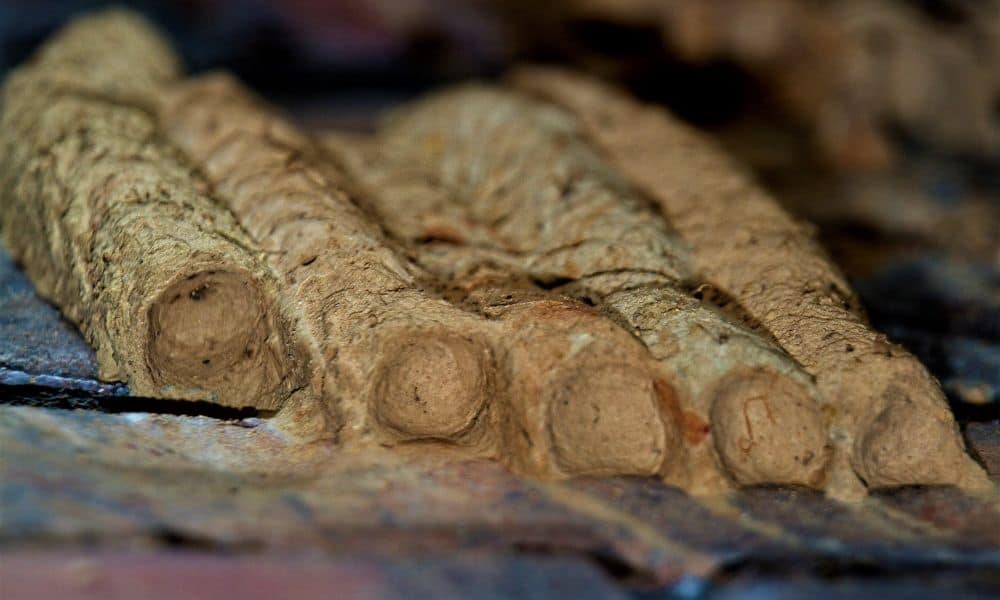
7. Sand Wasp
Sand Wasps are ground-burrowing solitary wasps that can be seen hovering over the ground. If you’re lucky you may even see one digging its burrow!
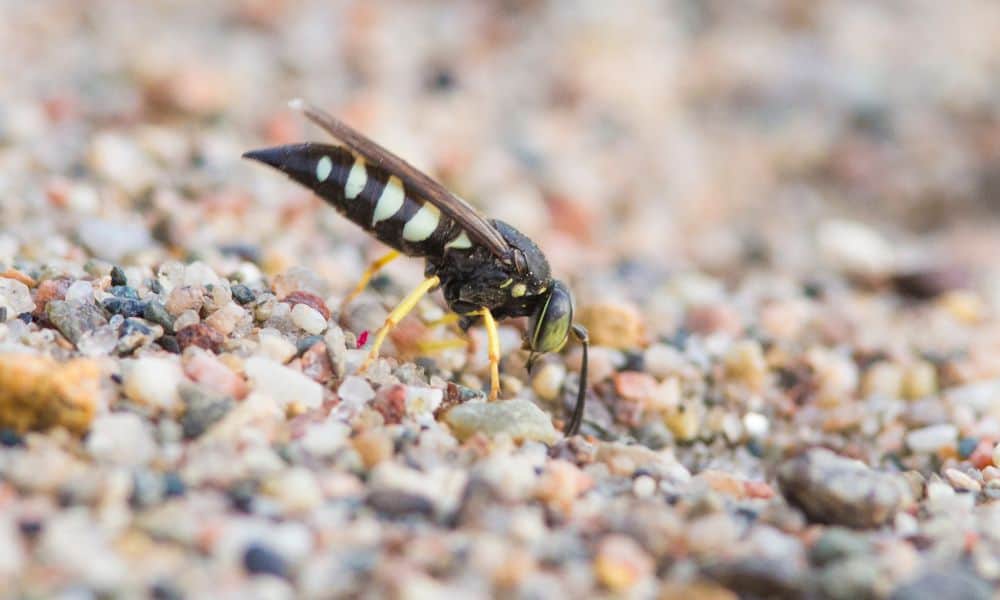
8. Great Golden Digger Wasp
Another type of Digger Wasp is the Great Golden Digger Wasp. These solitary wasps construct their burrows underground on patches of exposed earth. They hunt Katydids, Grasshoppers, and Crickets to feed their larvae.
How to Identify a Great Golden Digger Wasp
- They range in size from 1/2 inch to close to over 1.5 inches!
- Look for reddish legs and a black head covered with golden hair. Wings are amber colored.
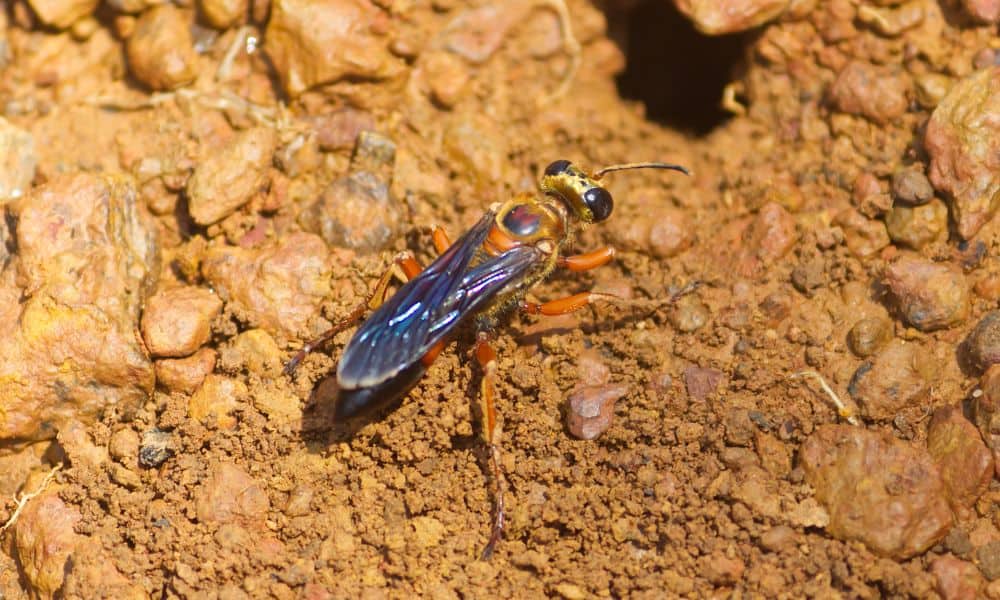
9. Parasitoid Wasps
Parasitoid Wasps encompass a variety of wasp species, many of which can be quite small and hard to notice. Parasitoid Wasps lay their eggs directly on their host prey, rather than creating a nest.
Gall Wasps / Cynipid Wasps
Often, it is easiest to notice Cynipid Wasps by what they leave behind, little “galls” on Oak tree leaves. Galls can be fuzzy and soft or hard balls.
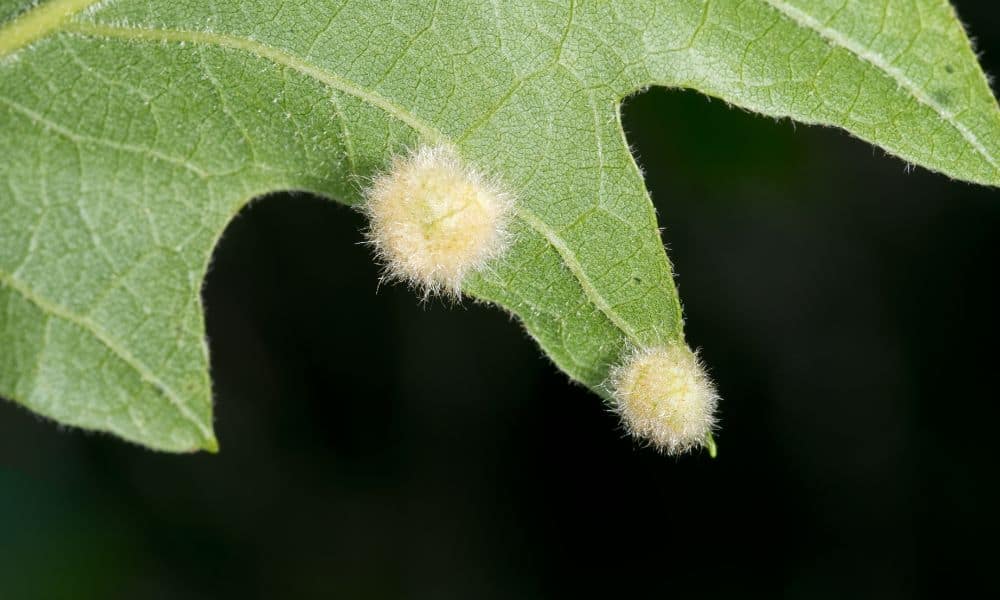
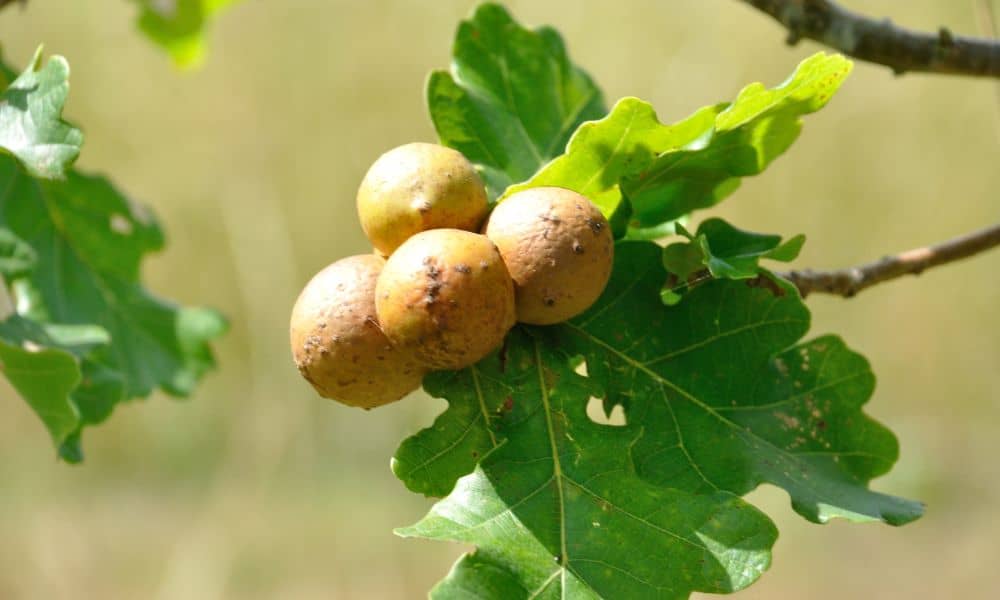
Braconid Wasps
Other types of parasitoid wasps lay their eggs directly in their prey, such as the Braconid Wasps that feed on hornworm caterpillars. If you’re a tomato gardener, these wasps are your friends! They can serve as a natural pest control for the Tomato Hornworms that like to munch on your tomato plants.
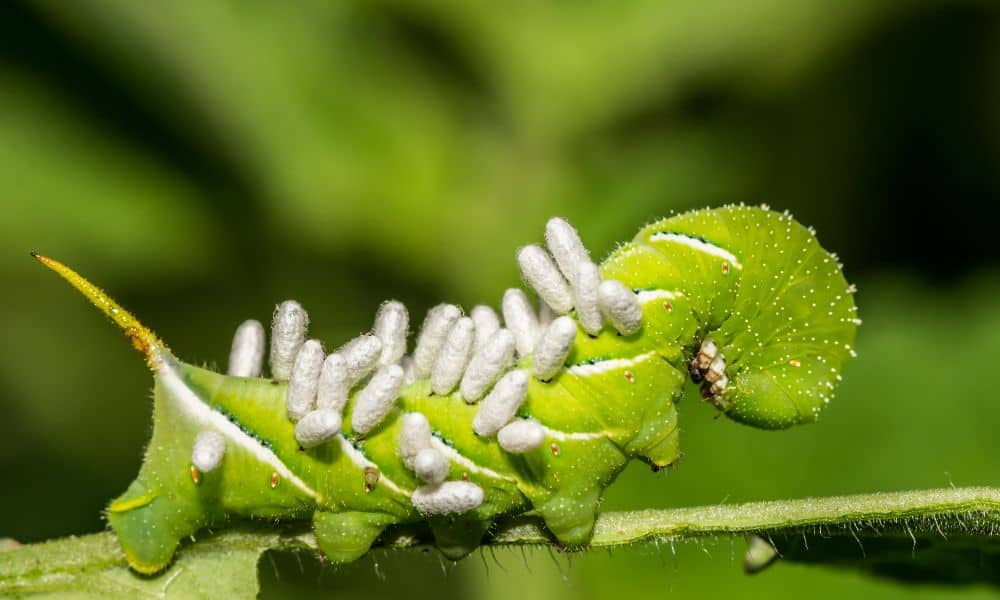
10. Potter Wasp
Potter Wasps are solitary wasps related to Mud Daubers. These beneficial insects help control caterpillar and beetle populations. They do not defend their nests, and therefore rarely sting. You will likely see their unique nests before you see them!
Potter Wasp Nests
- Potter Wasps nests are tiny nests constructed of mud in the same of a tiny pot or jug
- They often build their nests on plant stems or the surfaces of buildings.
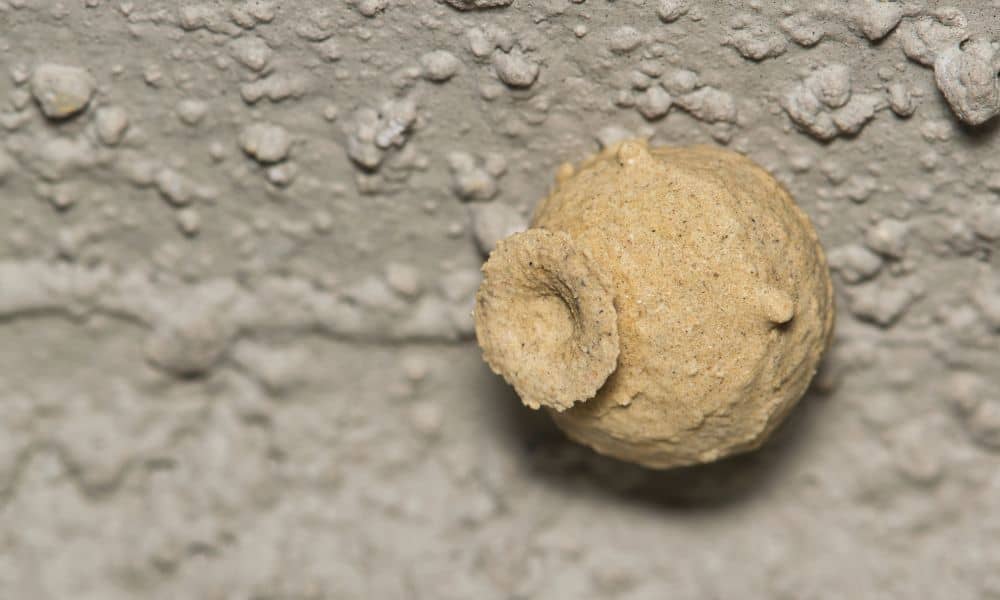
Download the Free PDF: 10 Native Bees & Wasps
I created a handy one-page PDF for you to print and keep by your backyard patio or garden bag. It includes a thumbnail photo of each insect along with some tips for identifying them. Get it here:
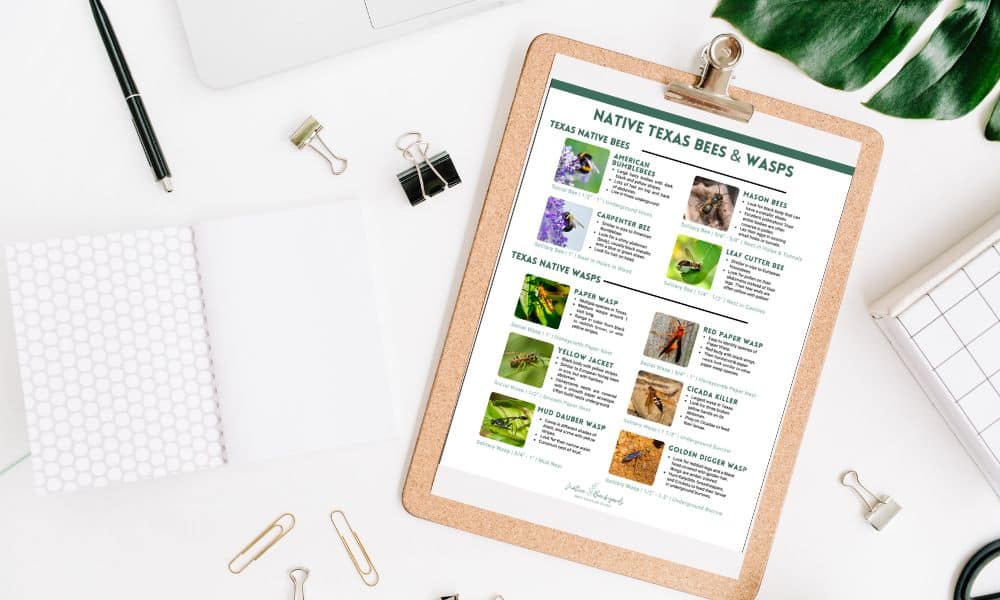
Learn About More Texas Insects and Wildlife!
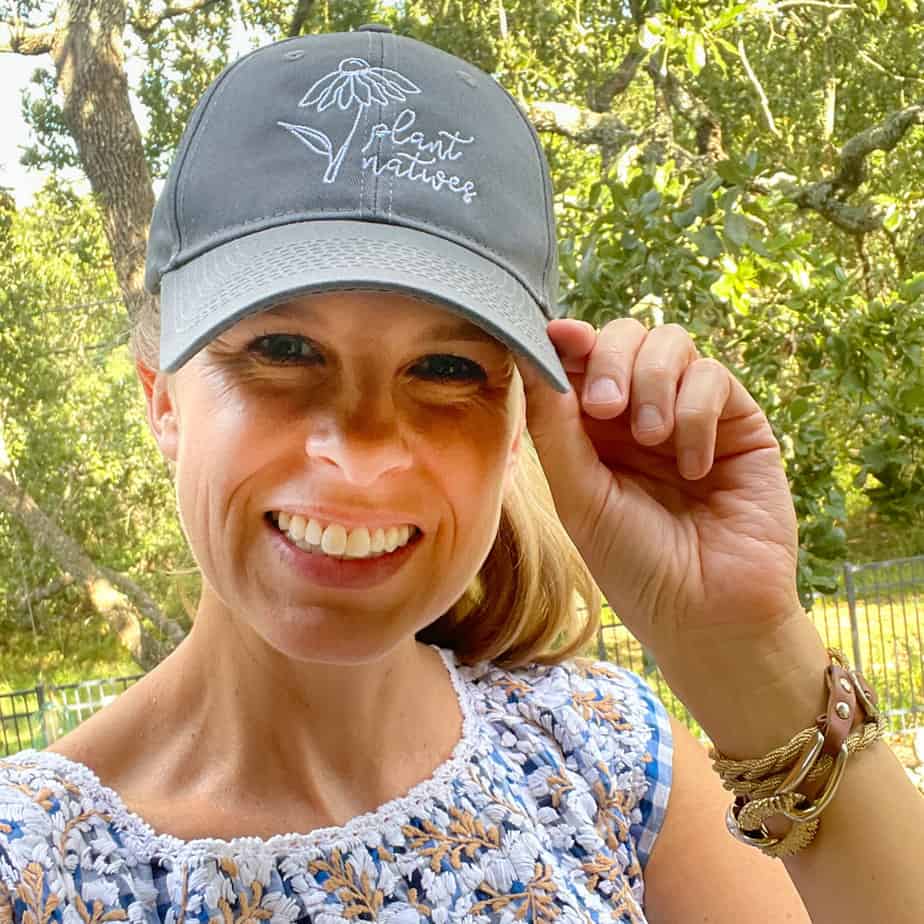
Welcome to Native Backyards! I’m Haeley from San Antonio, Texas, and I want to help you grow more native plants.
I have seen firsthand how the right plants can bring your yard to life with butterflies, bees, and birds. I’ve transformed my yard with Texas natives and I’m excited to share what I’ve learned with you.
Join my newsletter here! – each week I’ll send you helpful tips to make your native plant garden a reality!
Want to learn more about me and my garden? Check out my About page!
